Welcome to part two of my walk to find the pubs of the City of London, as they were in July 2020. At the end of part one, I was at the Ship in Talbot Court. From here, I walked back to Gracechurch Street, then down to Cannon Street, looking for the:
The Bell – Bush Lane
Walk west along Cannon Street, and just before reaching Cannon Street Station, turn left into Bush Lane, and a short distance down is The Bell.
A pub has been at this location for many years, with the pub claiming 1660 as the year of the first business.
The pub is the smaller building in the terrace, and is Grade II listed. According to the listing record the current building dates from the mid 19th century.
Between the top two windows on the Bell is a rather nice plaster relief of a bell.
Apparently below the pub are the remains of Roman walls. The HMSO 1928 publication, Inventory of Roman London, mentions Roman walls and a tessellated pavement found in the area of The Bell and Bush Lane.
Back to Cannon Street, and continuing west, at the junction with Queen Street, is:
The Sugar Loaf – Cannon Street
Another Grade II listed pub is the Sugar Loaf, now back to its original name after a short stint as an O’Neills between 1996 and 2014.
The Grade II listing dates the pub to early 19th century. The first records I could find date from the 1850s when the pub started appearing in newspaper reports.
One particularly tragic report from the 19th May 1868 is about a 30 year old servant, Emily Volenworth, at the Sugar Loaf who threw herself from an attic window of the pub, and died soon after. I wonder what circumstances led her to such an awful fate.
At the junction of Cannon Street and Queen Victoria Street, I turned south along Garlick Hill to find:
Three Cranes – Garlick Hill
The Three Cranes is a recent name change to an old pub that until a few years ago was the Hatchet.
The pub is now named after Three Cranes stairs, one of the Thames stairs to the south of the pub. The pub sign shows a map with Three Cranes stairs in the centre. It looks like a version of the Agas map, but is lacking in detail. The name Three Cranes comes from the three cranes along the river near the stairs, used for moving cargo between ship and shore.
A good name for a pub, and a local reference, and I suspect was chosen to add some authenticity as a new name for the pub.
Ye Olde Watling – Watling Street
Back up to the Cannon Street / Queen Victoria Street junction, then up Bow Lane to the junction with Watling Street to find Ye Olde Watling:
The pub is named after the ancient street on which it stands (or the rough alignment of the original Watling Street). Built by Sir Christopher Wren in 1668, The Encyclopedia of London claims that the pub was used by Wren as an office whilst designing St Paul’s Cathedral.
A newspaper report from August 1948 states that the pub had recently been repaired following war time damage, and records that the pub was in danger of demolition. At the time it was called Ye Old Watling Restaurant.
Ye Old Watling in 1948 in a view that looks more like that of a market town, than the City of London. The tower in the background is that of the church of St Mary Aldermary.
On a sunny lunchtime and evening, the space outside Ye Olde Watling would be crowded with drinkers, whilst other City workers and tourists walking up to St Paul’s Cathedral would squeeze past.
The pub sign emphasises the Roman connection with Watling Street:
A short distance further along Watling Street is:
The Pavilion End – Watling Street
With any pub, there is a need to differentiate, to show the pub is different to those in the local area and to attract a specific audience. The Pavilion End does this by being a themed sports / cricket pub and is relatively recent.
Whilst the Pavilion End is a perfect pub for a cricket enthusiast, the building is the more historic point of interest and is a rather nice mid 19th commercial building.
The building is Grade II listed and retains the iron columns used to support the structure of the building. Many of these can be seen on the facade facing Watling Street, now painted red. The pub also has some rather ornate decoration around the doors.
The Grade II listing was dated 1977, and was fortunate as the 1970s were the decade when many of these buildings were at risk. The LMA Collage archive includes a photo of the building in 1971.
Image credit: London Metropolitan Archives, City of London: catalogue ref: SC_PHL_01_027_71_9832
The above photo illustrates the risk to City buildings in the last decades of the 20th century as the buildings on either side of what is now the Pavilion End have both been replaced with later buildings.
From Watling Street, i walked up Bow Lane, and turned into Groveland Court to find:
Williamson’s Tavern – Groveland Court
Groveland Court is a narrow alley off Bow Lane, with the main attractions being the pubs at the end of the alley, as Groveland Court does not lead anywhere.
Williamson’s Tavern has a long history, which a sign on the front of the pub informs:
“Williamson’s Tavern dates back to the 17th century, built not long after the Great Fire of London in 1666. The site became the address of the new Mayor of London and the wrought iron gates a gift from William III and Mary II who are thought to have dined here.
By 1739 the building was not thought to be grand enough an address for the Mayor and it was sold to Robert Williamson for conversion into a hotel. the hotel remained in the Williamson family until 1914 when James Williamson died and it was sold at auction”.
The pub also claims to hold the oldest excise licence in the City and to be haunted by a poltergeist called Martha, whose presence apparently causes Police Dogs to bark as they pass Groveland Court, and refuse to enter the narrow alley.
Oppsite Williamson’s Tavern is:
The Four Sisters – Groveland Court
The Four Sisters is not really a pub, rather a cocktail bar / restaurant and is styled as a Georgian townhouse. I have included the Four Sisters as externally it does look like a traditional pub and has a traditional pub sign handing outside the building.
The wrought iron gates to the left of the above photo were the gift from William III and Mary II, mentioned in the history of Williamson’s Tavern. The Groveland Court Four Sisters is an offshoot of the main establishment at Canonbury Lane, Islington. Although the Groveland Court establishment has been closed since March, I am not sure if it is reopening as it has disappeared from the company’s website.
From Groveland Court, I walked back down to Cannon Street, up to St Paul’s Churchyard, then down Peter’s Hill to:
The Centre Page – Knightrider Street
There is a long history of a pub on this site, possibly dating back to at least the 17th century, although the current name is recent, having changed in 2002 from the Horn Tavern.
Although the pub has changed name, the large lantern on the corner has been a long term feature, which my father photographed from Sermon Lane (the original lane that now sort of runs to the west of Peter’s Hill at the top of the steps). I wrote a post about the Horn Tavern here.
From Peter’s Hill / Sermon Lane, I walked up to and along Carter Lane, to:
The Rising Sun – Carter Lane
The Rising Sun announces its location as you walk along Carter Lane, before you can see the actual pub:
Another Grade II listed, early / mid 19th century building, the Rising Sun is a typical City pub.
The Rising Sun is within the St Paul’s Cathedral Conservation Area, so as well as the Grade II listing for the pub, the surrounding area should be preserved as the narrow streets add to the pub’s character, although Creed Lane, the street I was standing in to take the above photo is currently closed off, with a large empty space where some new building work is underway. Hopefully whatever is planned will maintain the character of the area. Also looks like the facade in the distance has been retained.
From Carter Lane, I walked down St Andrew’s Hill to find:
The Cockpit – St Andrews Hill
The Cockpit is a lovely Victorian triangular pub, with one side on St Andrew’s Hill and the other on Ireland Yard.
The Cockpit is a perfect example of the difficulty of finding the true history of places and the origins of names. Most references to the Cockpit pub link the name to cock fighting and a cock pit on the site. References also include a name change, for example the London Encyclopedia states that “After cockfighting was banned in 1849, the name was changed to the Three Castles”.
The Three Castles name was though being used almost 50 years earlier with a reference in the Morning Advertiser on Saturday July 2nd 1808: “The Members of the Benefit Society of Taylors held at the Three Castles, St Andrew’s Hill, Blackfriars, are requested to meet at the above house on MONDAY the 11th July at Eight o’clock in the evening”.
St Andrew’s Hill was originally named Puddle Dock Hill as the street led down to Puddle Dock on the Thames. I cannot find a cock pit reference on any early maps, and books such as Old and New London make no reference to a cockpit being located here. The most common historical reference to the area is that Shakespeare bought a house in 1612 in the area around St Andrew’s Hill and Ireland Yard.
There may well have been a cockpit here, and a pub on the site before 1808 may have been called the Cockpit, but it was not the banning of the practice in 1808 that caused the name change, and I can find no firm evidence that there was.
It is though a lovely, friendly pub, and usually one of those that can be guaranteed to be open at the weekend.
My next stop was a pub that looks similar to the Cockpit, and was actually open.
The Blackfriar – Queen Victoria Street
The Blackfriar is a magnificent pub, sitting on a triangular plot of land which has resulted in the shape of the pub.
Named after the Dominican friary which has given its name to the local area and the nearby bridge over the River Thames, the Blackfriar was built around 1875, so not long after Queen Victoria Street opened. The pub was Grade II listed in 1972, which probably explains how the pub has survived the development of the surrounding area. The triangular shape of the building is down to an original street and the new Queen Victoria Street.
To the left of the pub is a short stub of a street leading to a dead-end. On maps this is currently named as Blackfriars Court, but was originally Water Lane. The plot of land originally extended further south to make a more rectangular plot, however Queen Victoria Street sliced through the lower part of this plot and created a triangular plot on which the Blackfriar was built.
Designed by the architect H. Fuller-Clark, with decorations by the artist Henry Poole, the Blackfriar is a unique pub, both inside and out, and was open by the time I reached the pub.
Socially distanced tables were outside, and despite being very well organised and feeling very safe, it was quiet, which highlights the challenges that City pubs may encounter in the coming months. It is not just about reopening – there need to be sufficient people in the City, willing and wanting to go to a pub, and feeling safe when they are there.
From the Blackfriar, I walked up New Bridge Street, and turned left into Bridewell Place:
St Bride’s Tavern – Bridewell Place
St Bride’s Tavern is a modern looking pub, with a large central set of bow windows on the first and second floors of the building. I suspect it would look better if the wall and windows on either side of the central section were symmetrical, however today there are six windows on the right, and one on the left.
The austere facade of the pub is broken up with lots of greenery, there is usually a large display of flowers across the building. At the very top of the bow window are some interesting gold painted decorations:
The St Bride’s Tavern, or indeed any pub, has not been at this location for a long time. The 1894 Ordnance Survey map shows that at the time, the same space was occupied by a Police Station of the 3rd Division.
The pub is named after the church of St Bride’s which is a short distance to the north west, and the pub sign displays the spire of the church above the surrounding rooftops:
It was to the edge of St Bride’s church that I headed to next:
The Old Bell – St Bride’s Avenue
St Bride’s Avenue runs along the northern edge of St Bride’s churchyard, and despite the use of Avenue in the name, it is a narrow alley leading up from Bride Lane. The narrow space also made photographing the Old Bell somewhat difficult.
The Old Bell is an old pub, claiming to have been built by Sir Christopher Wren in the 1670s for workmen and masons working on the church of St Bride’s. On a warn summer’s day, the alley would frequently be crowded with drinkers – but not today.
I have used St Bride’s Avenue as the address for the pub, however the main address is on Fleet Street, where the pub also has an entrance, however personally, I always prefer the St Bride’s Avenue entrance. The narrow alley is a much better way to enter a pub rather than from the bustle of Fleet Street.
The Old Bell has survived the loss of the newspaper industry around Fleet Street, as workers from the papers published and printed along the street once made up a significant proportion of the pub’s clientele. Hopefully the Old Bell will continue to prosper long into the future.
Before walking up to Fleet Street, there was one more pub to find in Bride Lane, opposite the steps leading up to the Old Bell:
Crown and Sugar Loaf – Bride Lane
The Crown and Sugar Loaf could be easy to miss as you walk along Bride Lane, as your attention probably wanders to the adjacent church and the Old Bell, but it is a pub worth visiting.
A small pub, but with an interesting history. Although the space has been a pub for many years, it has only been the Crown and Sugar Loaf since 2004. The space now occupied by the Crown and Sugar Loaf was once part of the Punch Tavern, but this space was separated from the original pub when the Punch Tavern was sold, and a new pub opened in this smaller space.
The Crown and Sugar Loaf is an interesting name. Crown usually refers to some link or reference to Royalty. Sugar Loaf could either refer to the trade of the Grocer, or, Sugar Loaf was the name applied to a block of refined sugar, exported from the Caribbean.
The name is the original name for the pub that would be called the Punch Tavern, so the next pub was obviously the pub that was separated off from the Crown and Sugar Loaf, and was renamed as:
The Punch Tavern – Fleet Street
The Punch Tavern was originally the Crown and Sugar Loaf. It was renamed at some point in the 1840s. The first record I can find of the pub using the Punch name is from 1846.
The original Crown and Sugar Loaf dates to the 18th century. A newspaper report from October 1790 reports on the ever present risks to London buildings when the Crown and Sugar Loaf was badly damaged by a fire which started in a gingerbread baker’s in New Bridge Street;
“The flames communicated from thence to the adjoining premises backwards and burnt through to Fleet-street, the Crown and Sugar Loaf and Mr Pridden’s, were also much damaged before the flames could be extinguished”.
The reason for the name change in the 1840s were the number of drinkers at the pub who worked in the nearby offices of Punch magazine. The current building dates from 1894.
A short distance west along Fleet Street is:
Ye Olde Cheshire Cheese – Fleet Street
I am always a bit dubious about places that put “Ye Olde” in front of their names, but the Cheshire Cheese is genuinely old. The pub is housed in the building to the right of the brick built pair in the centre of the following photo:
The pub dates from 1538 and the current building dates from 1667. There is no entrance to the pub from Fleet Street, you have to walk down Wine Office Court to the left of the Cheshire Cheese to gain access. Wine Office Court dates from at least 1676, and takes its name from the office that issued licences for selling wine that was located in the court.
Perhaps one of the strangest stories from a London pub is that of the parrot that lived at the Cheshire Cheese and the national publicity of its death in 1926. From the Devon and Exeter Gazette on November 1st 1926:
“A Great Bird: The death after a long illness of the Cheshire Cheese parrot has gloomed half of London. The news was broadcast last night from 2LO with due solemnity. So far as a grey and scarlet South African parrot can achieve greatness, that bird did. For 40 years it was the biggest personality in Fleet-street. No really illustrious visitor to this country failed to secure an audience, at which the parrot always took the honours. It was a gifted talker, even by the highest Army standards, and beside such wide-tricks as imitating perfectly all the sounds of a public bar not only swore like a cavalry S.M. but obviously knew the right time to do it. I once saw it drop a cigarette box it was perforating. It promptly exclaimed just what most ex-Service men would say if they dropped a half crown down a grid. Once Princess Mary insisted on being introduced to Polly. It had to be done, but it aged the manager. If anyone had mentioned the Kaiser the King’s daughter would have heard things not mentioned to a drunken cow-puncher”.
As well as the parrot, the Cheshire Cheese has also been frequented by lesser celebrities such as Charles Dickens.
The Cheshire Cheese likes to wear its history:
Across the road from Ye Olde Cheshire Cheese, is:
The Tipperary – Fleet Street
The Tipperary occupies a relatively thin building at 66 Fleet Street:
A board at the front of the pub provides some detail as to the long history of the pub:
Further west along the Strand, at number 22 is:
Ye Olde Cock Tavern – Fleet Street
Another tall and narrow pub, sandwiched between two later stone buildings, Ye Olde Cock Tavern has an entrance which covers the entire ground floor aspect to Fleet Street:
Ye Olde Cock Tavern is Grade II listed, and the listing provides some architectural details:
“1912 by Gilbert and Constandures. Painted roughcast. 4 storeys and attic; a single bay facade; ground floor entrance with wide 4 centred arch. Timber mullioned and transomed oriel window with leaded lights at 1st floor. Attic within half-timbered gable with plain bargeboards. Steep tiled roof. Hanging sign on wrought iron bracket. Contains a C17 chimneypiece of stone supported on plain brackets with an oak overmantel flanked by enriched terminal pilasters”.
The Historic England listing gives a date of 1912, however the pub is much older, but at a different location. A pub with the name may have been established as early as the 17th century, however it was on the opposite side of the street. The pub moved to its current position in 1887 when the construction of a bank resulted in the demolition of the original pub.
The move across Fleet Street seems to have been the catalyst for an addition to the name. The only references I can find to the full name of Ye Olde Cock Tavern date from the 1880s. The pub had previously been known simply as the Cock Tavern. I suspect that “Ye Olde” was added to the name at the time of the move across the street to perhaps ensure that although it was in a new location, it was seen as a continuation of a name which had been on Fleet Street for many years.
The original pub seems to have been known for oysters, for example from a newspaper report from the 1st December 1846 “The country visitor to the metropolis has been, for more years than we can remember, accustomed to take his first oysters and stout at the Cock Tavern, in Fleet Street; and we have occasionally, like other people, trespassed upon his well saw-dusted floor”.
The move of the pub must have been to an existing building, before the re-work of 1912, as the Grade II listing makes reference to 17th century features remaining in the building.
Leaving Fleet Street behind, I walked north along Fetter Lane to find:
The White Swan – Fetter Lane
The White Swan in Fetter Lane is within a 1950s building, and now advertises as a Pub and Chophouse. Pubs have had to focus more on food over the years as there is more profit in food than there is in just the sale of beer and spirits at a bar.
Although the building is relatively recent, there has been a Swan on Fetter Lane since at least 1808, when the pub was used in an advert for a Chandlers Shop to let, with interested parties invited to ask for directions at the White Swan, Fetter Lane.
It is fascinating the different activities carried out within pubs, when they were far more of a community resource than today. I have written about many of the functions carried out within pubs along the river in east London, but interesting to see that many of these same functions were carried out at pubs in the City. For example pubs were a common place for inquests to be held, and on the 22nd November 1832, the Morning Post reported:
“Yesterday evening an Inquest was held at the White Swan, Fetter-lane, Fleet-street, on the body of a female named M. Cleallan, who committed suicide by cutting her throat with a razor. The Inquest was held before the City Coroner, J. SAYERS, Esq., and a very respectable jury. The Jury having viewed the body , and examined witnesses amongst whom was the husband of the deceased, unanimously returned the following verdict;- That the deceased committed the rash act in a fit of temporary derangement”.
The White Swan is within a rather nice brick building, with concrete surrounding the central windows. Between the first and second floors, the name “The White Swan” is carved on one of the concrete panels.
From Fetter Lane, I turned off into Norwich Street, to the junction with Furnival Street, to find:
26 Furnival Street
Much like the White Swan, 26 Furnival Street (the name of the pub as well as the address) is a pub which now concentrates far more on food.
The name change is recent as this was a typical corner pub called the Castle.
The name comes from the original street name – Castle Yard, which changed to Furnival Street in the early 1890s. Norwich Street, the street that runs alongside the pub back to Fetter Lane was called Magpie Yard. The Castle Yard name was changed to commemorate Furnival’s Inn – not an Inn in the pub sense of the word, rather one of the Inns of Chancery. Founded by William de Furnival in 1383, and later part of Lincoln’s Inn.
The current pub building dates from 1901, but there has probably been a pub on the site for a few hundred years.
And with 26 Furnival Street, I have concluded part two of my walk to find the pubs of the City of London. I had intended to complete this walk in two posts, however with each post being over 4,000 words, and plenty of photos, I do not want to inflict too much on you, the reader.
Part three will be the final post, and will cover pubs from Holborn, Smithfield and Aldersgate Street.

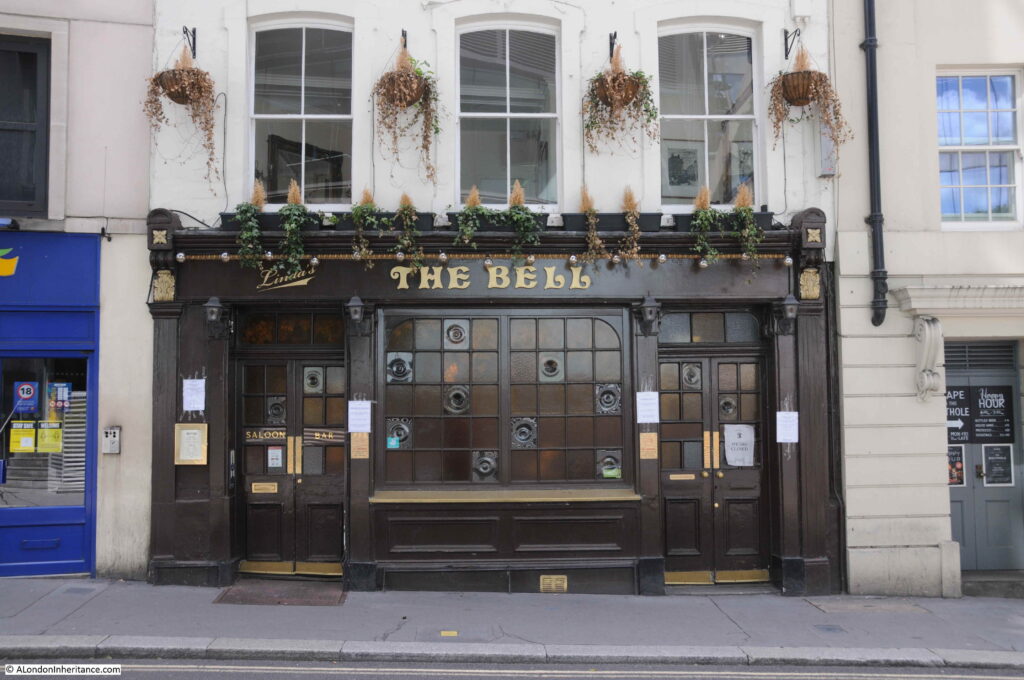

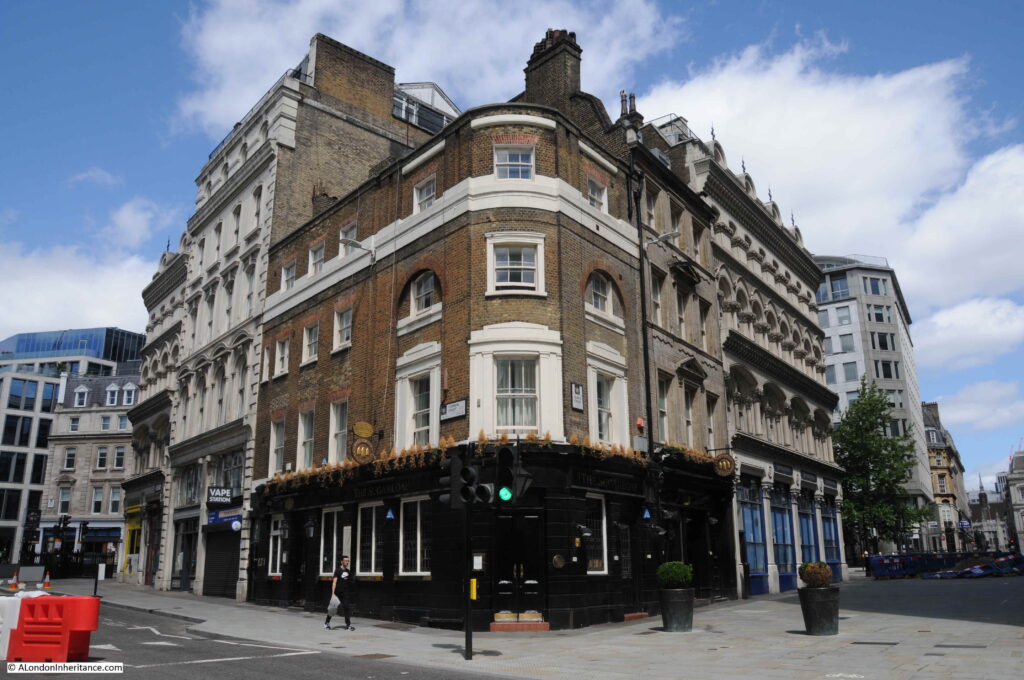
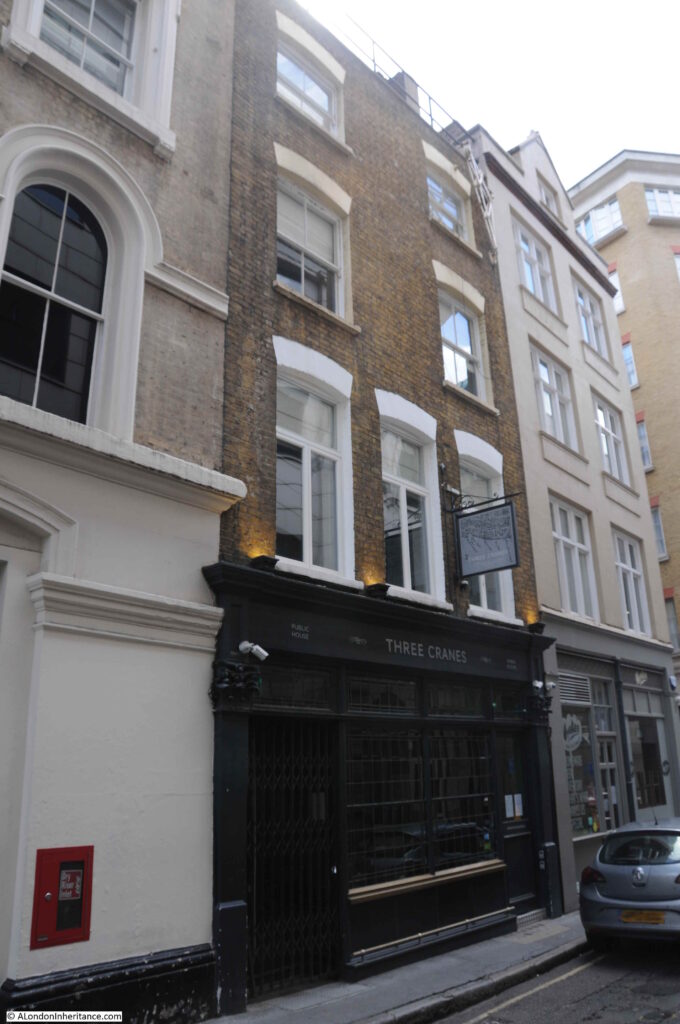
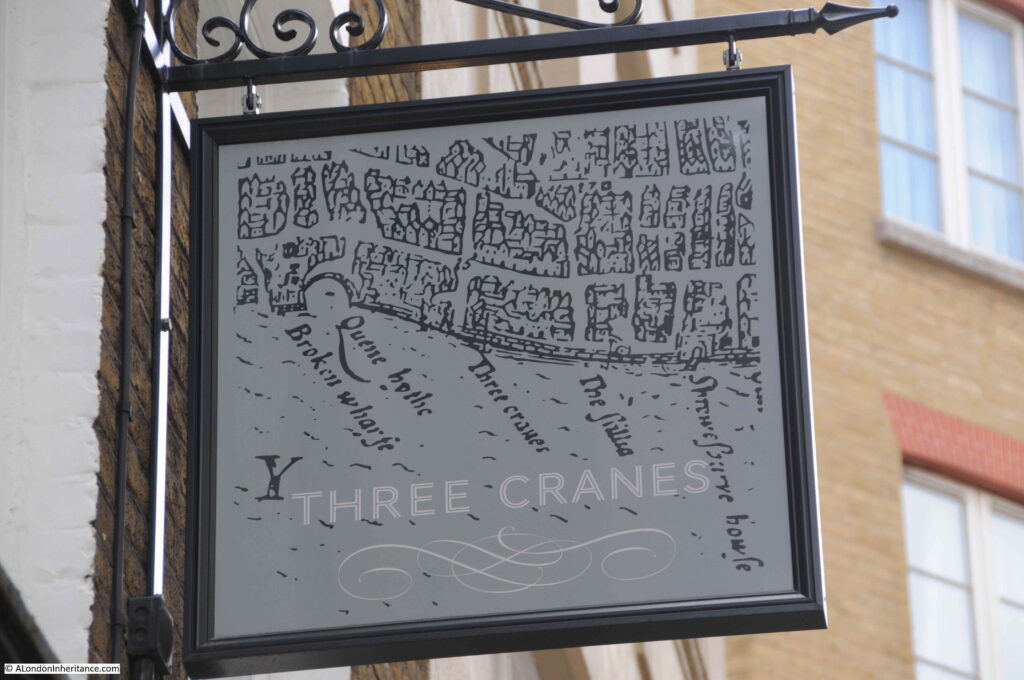
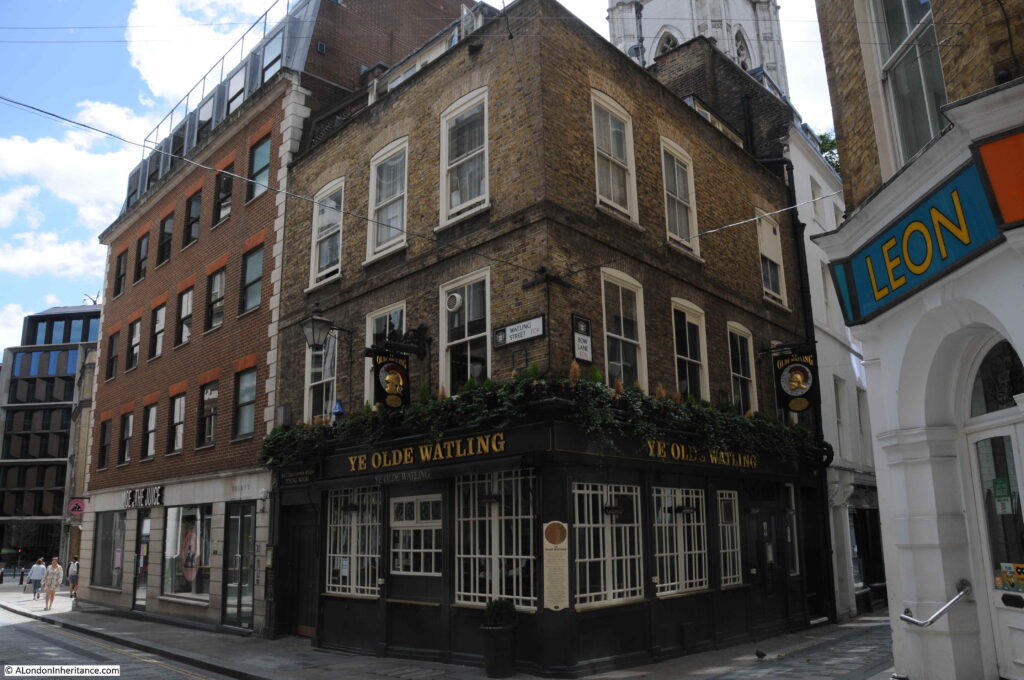
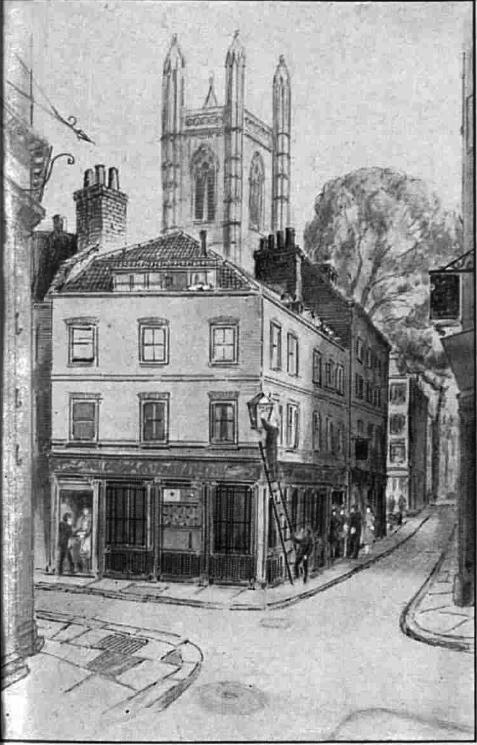
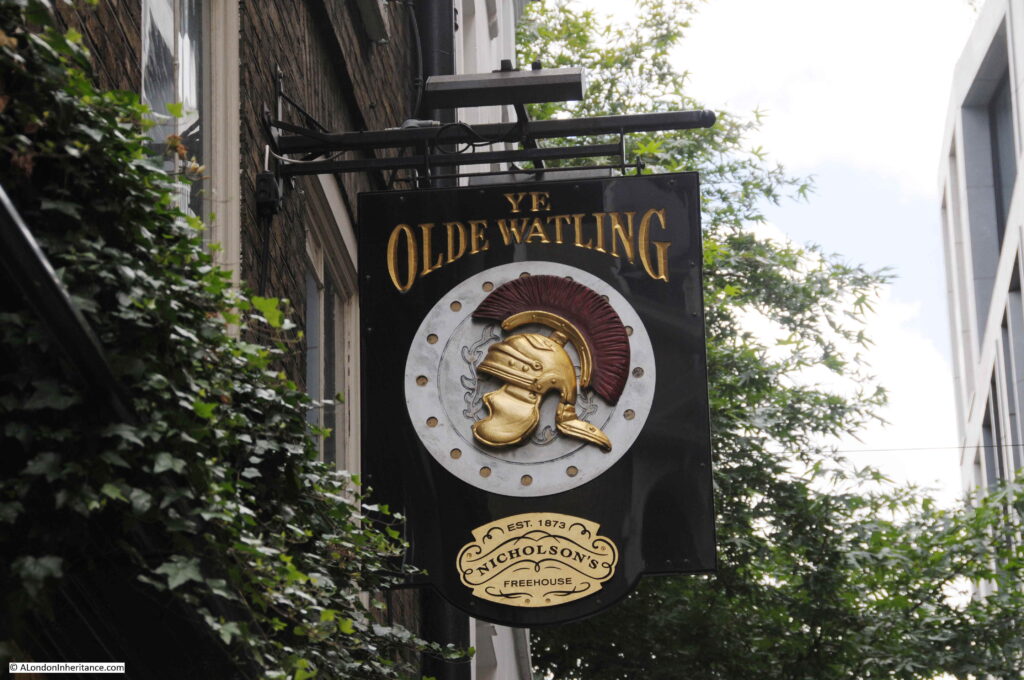
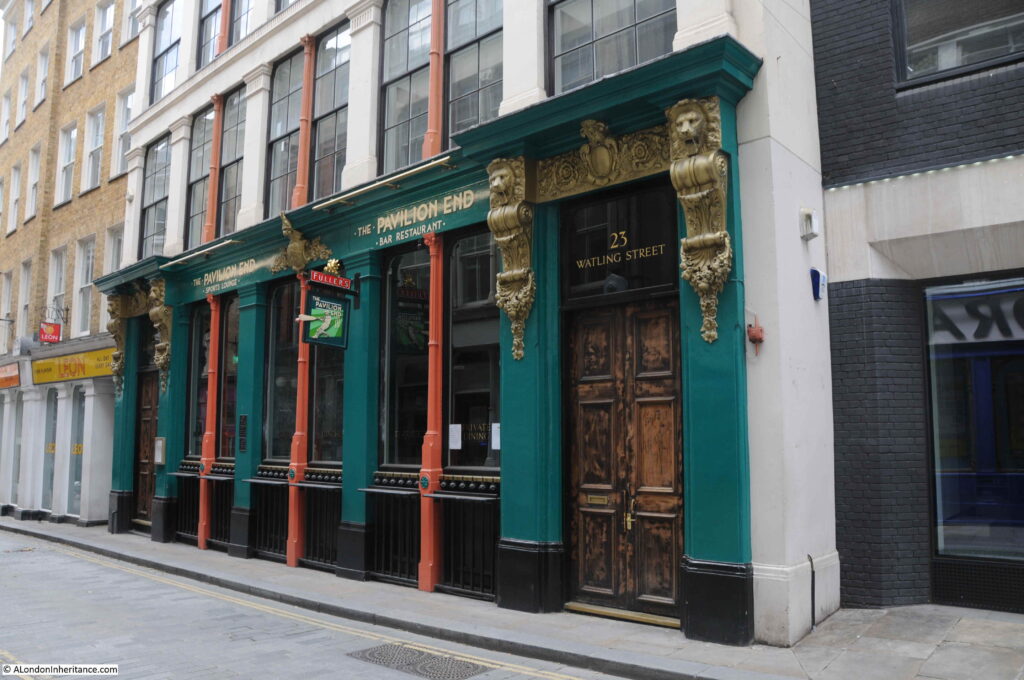
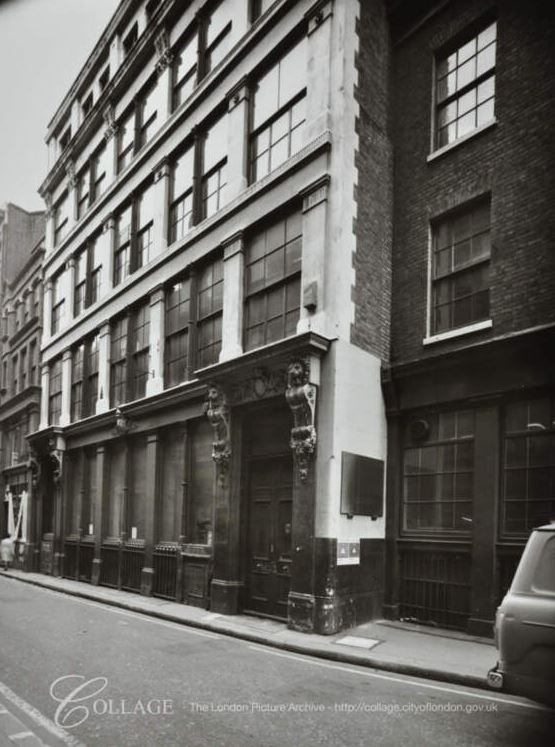

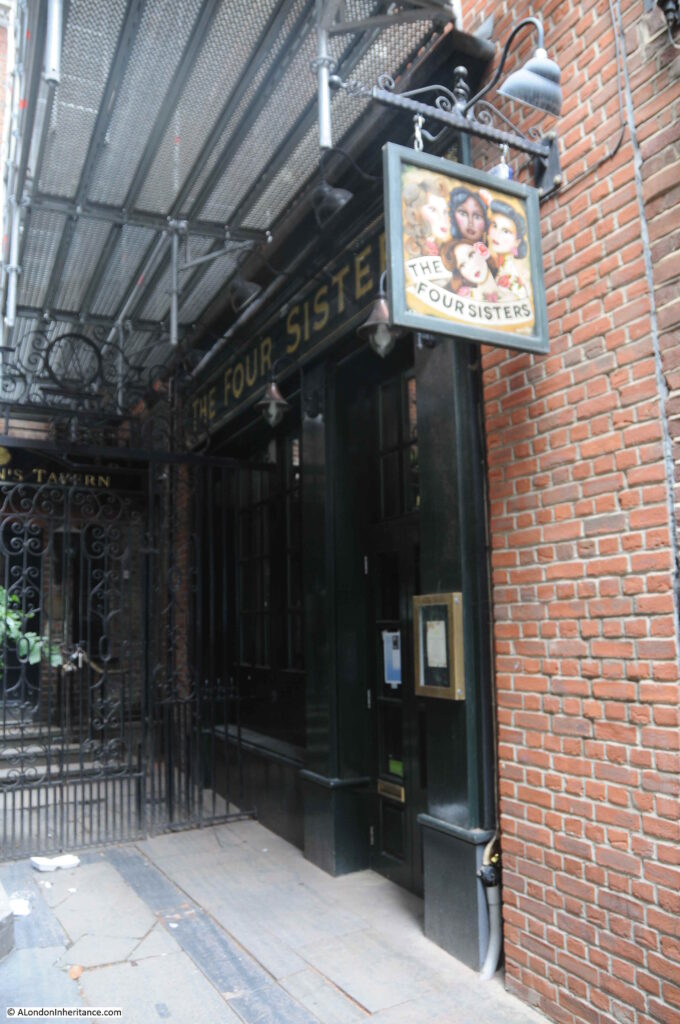

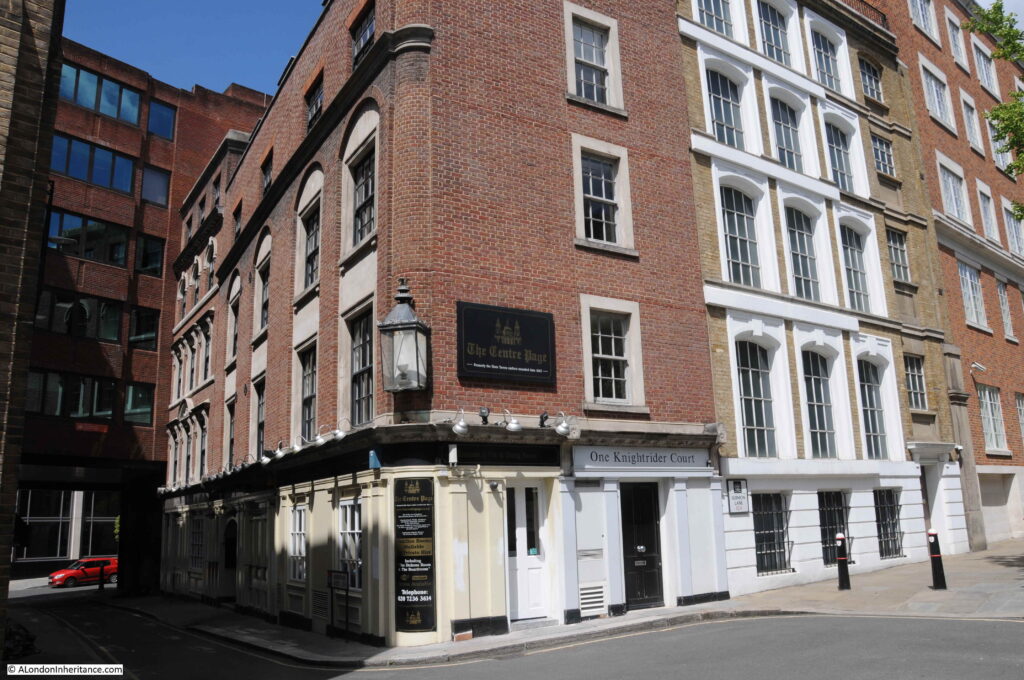

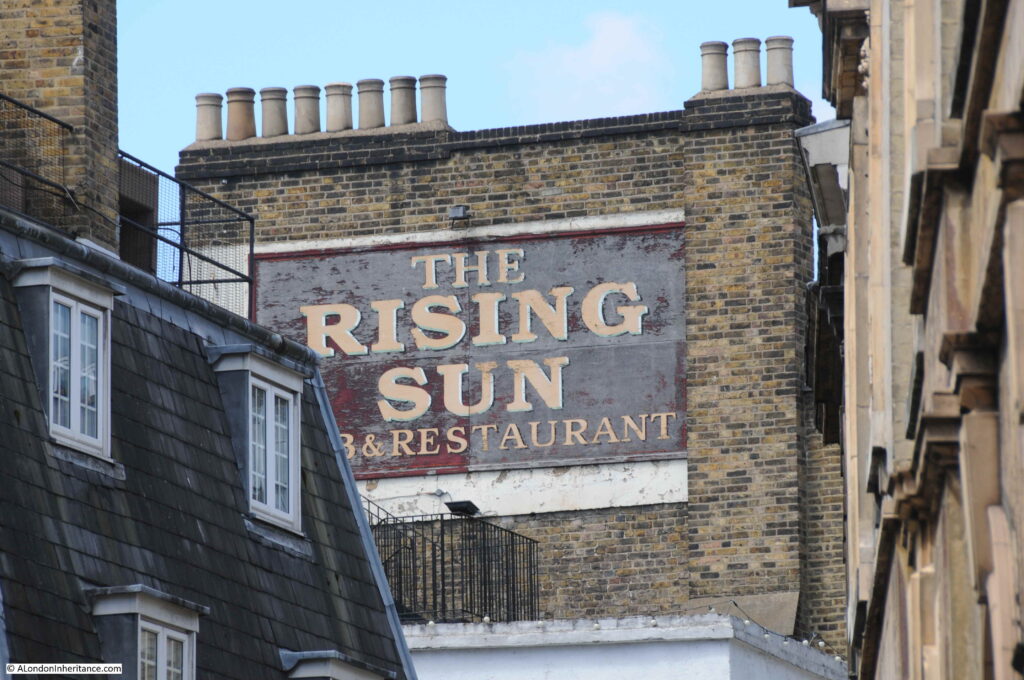
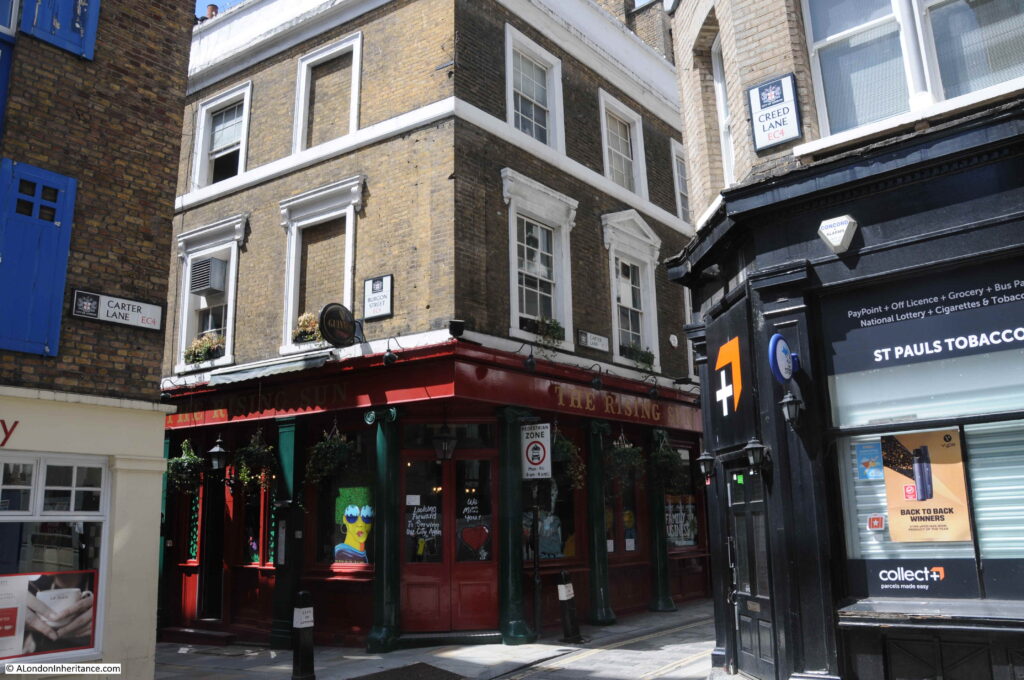



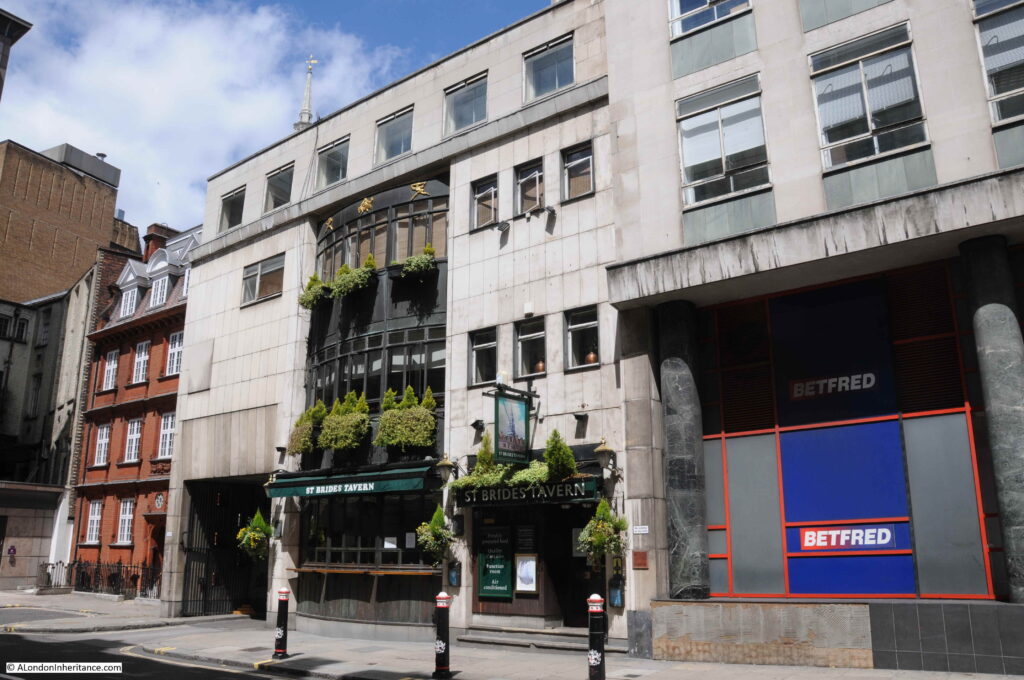
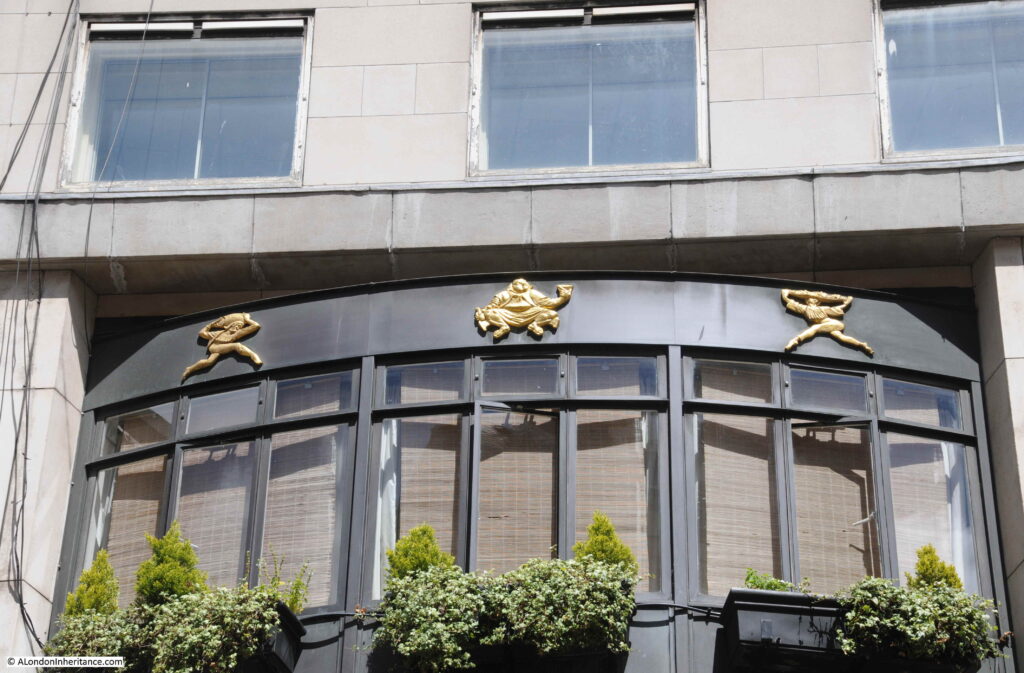
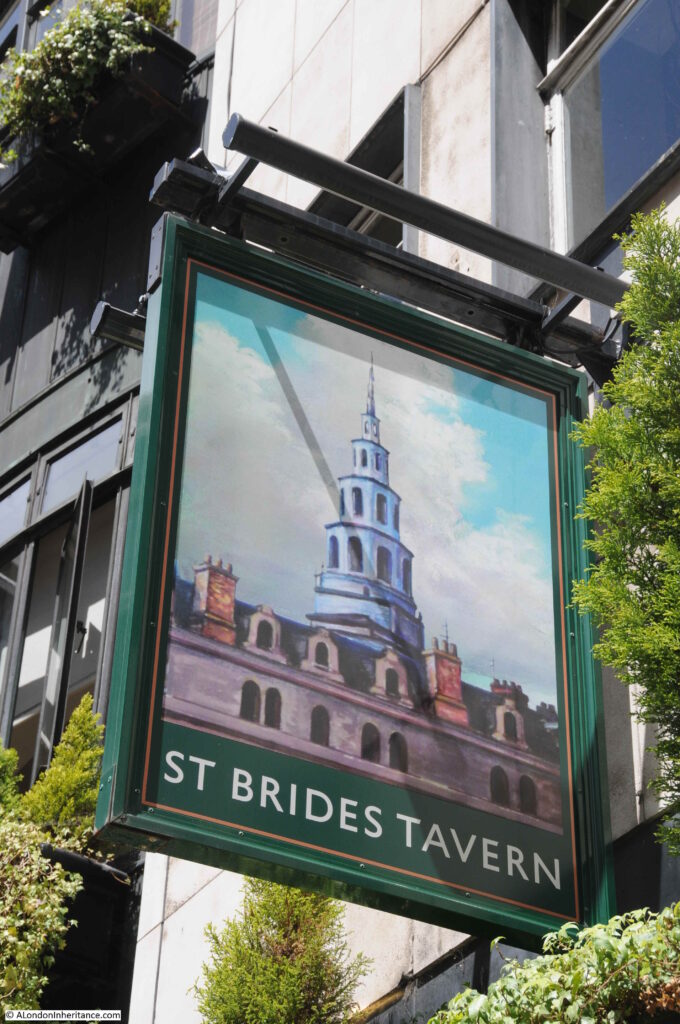
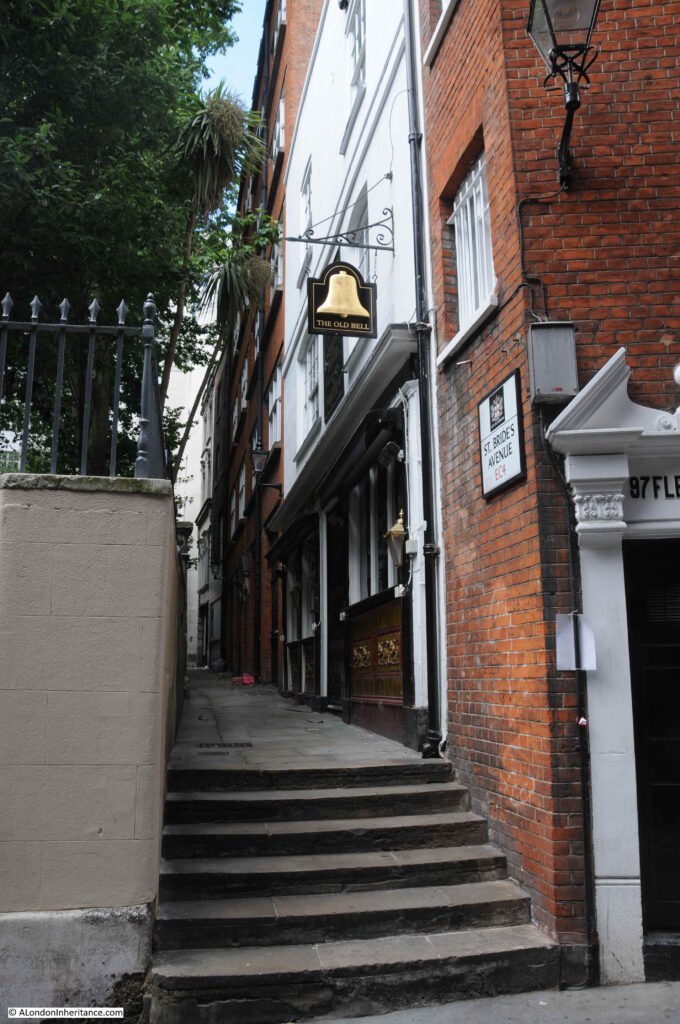

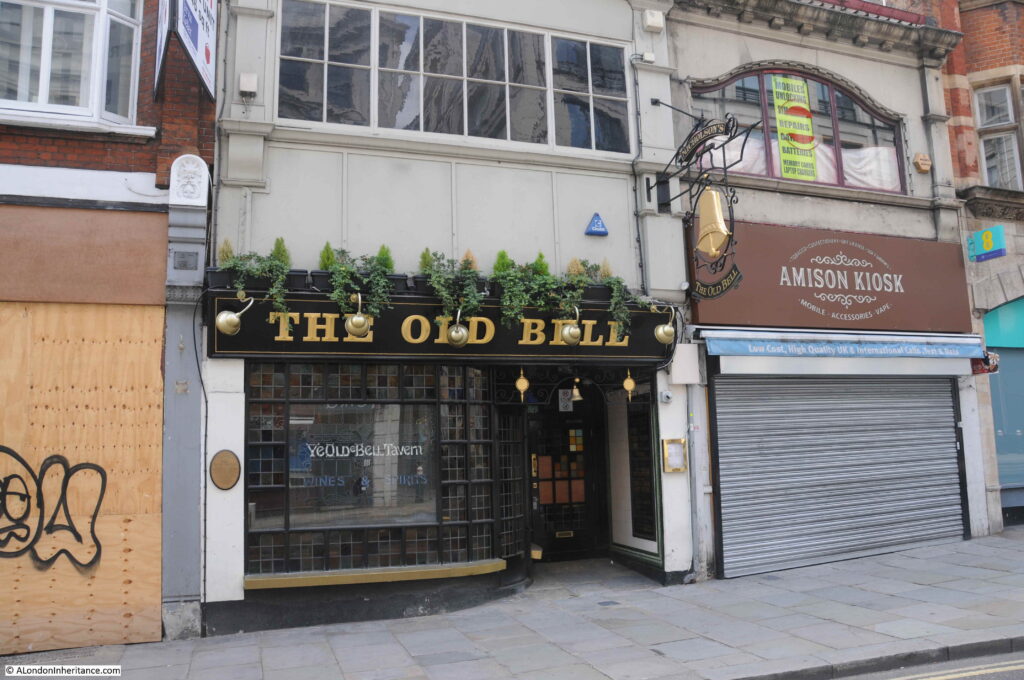






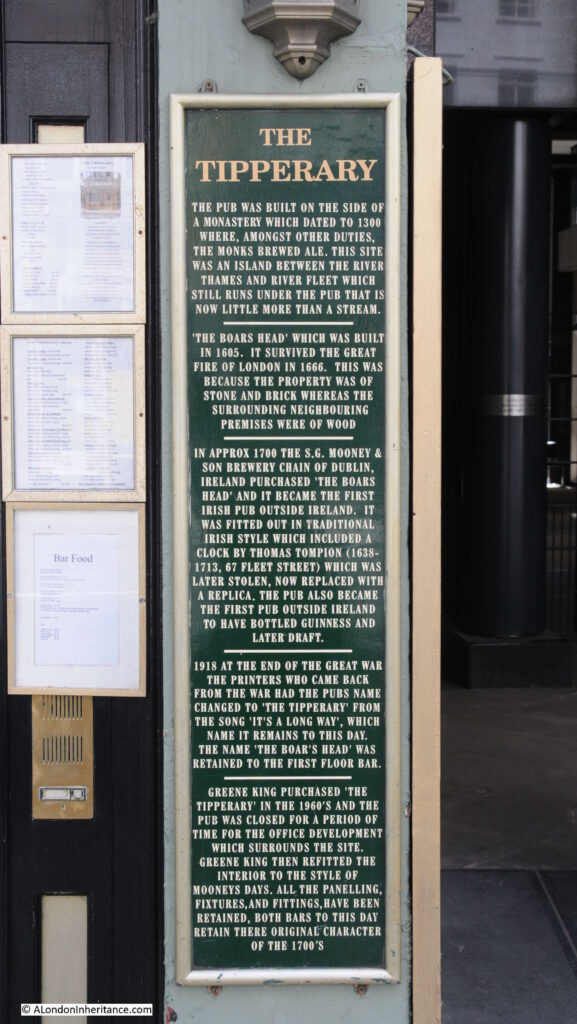
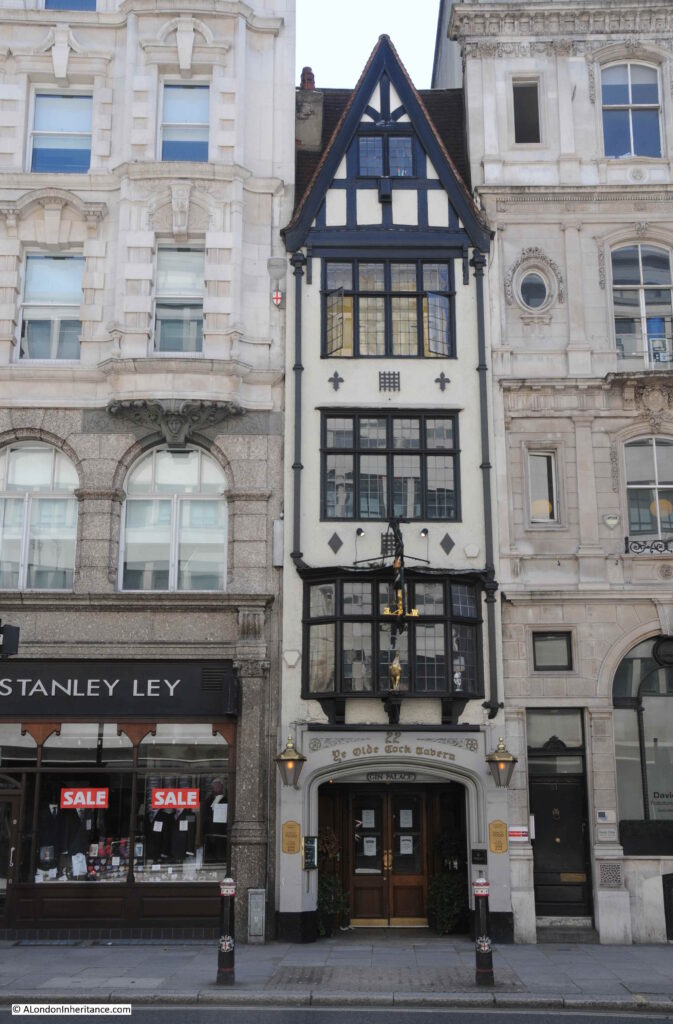
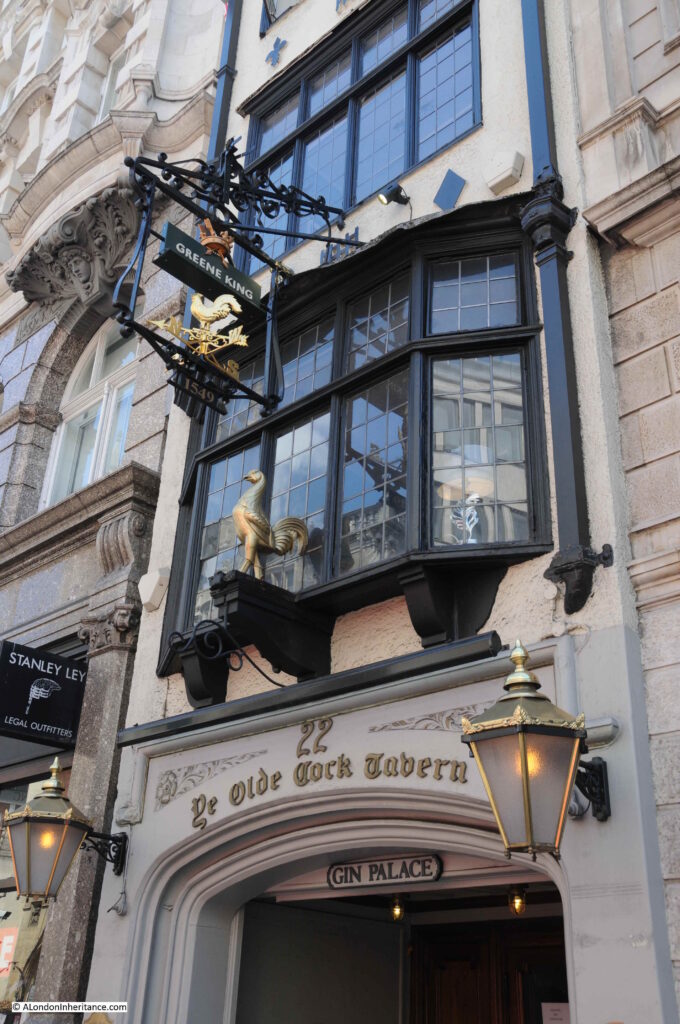
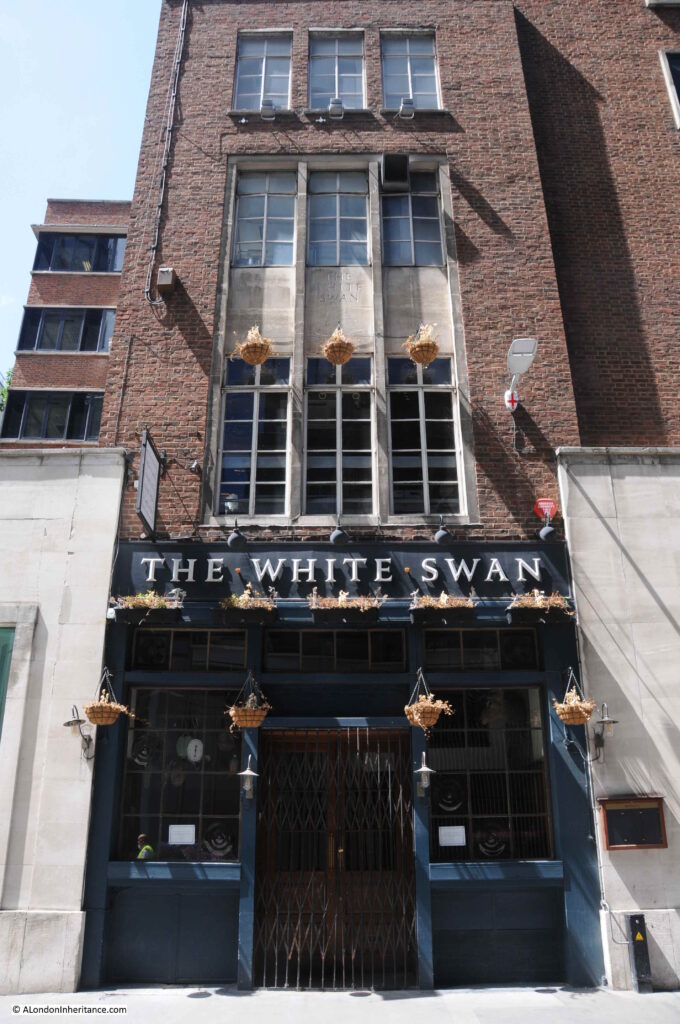

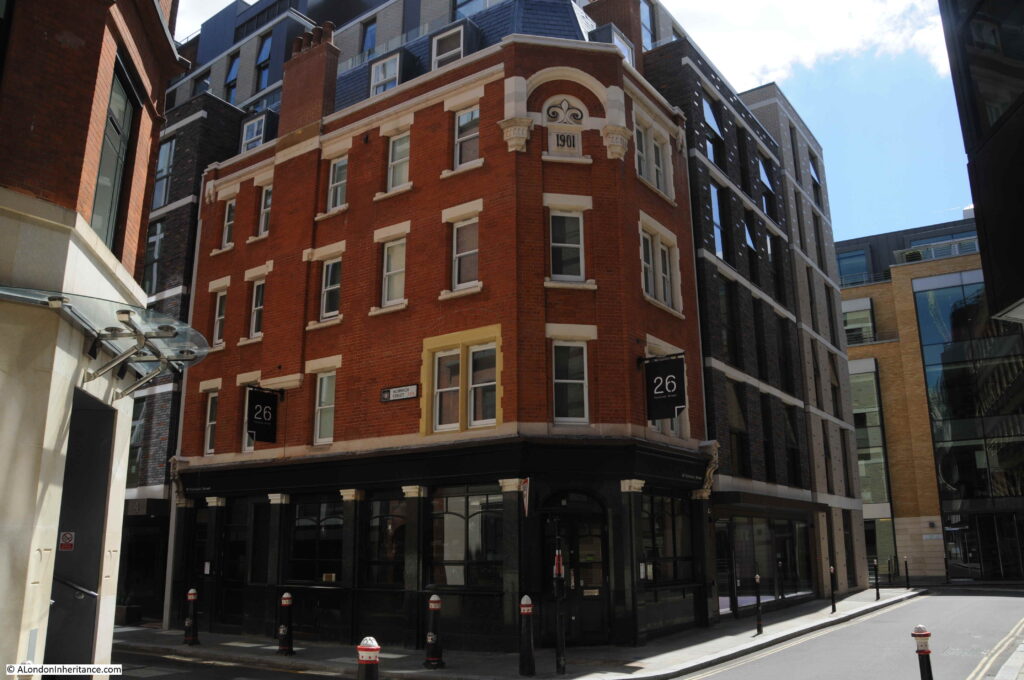
Fantastic blog – really interesting !!
Dear author
I feel quite intoxicated after reading second part of your article it would make a great book thanks again for another Interesting Insight into this great city David ayres Cripplegate
The Cockpit on St Andrew’s Hill preserved some of its Hogarthian charm until recently. Largely ignored by the young professionals, it attracted St Paul’s choristers and random eccentrics. An amiable Schnauzer dog called Wolfram presided from roughly 2000-2010. When the Times had its HQ in Queen Victoria Street, it used to be a journalists’ pub. The folklore was that the lower level of the split floor (at the sharp end of the wedge) used to be a bona fide cockpit, although this is most likely a yarn.
Splendid. I’ve been to more of these than your previous post. The Cockpit and Blackfriar are particular favourites. We (London Historians) always start our Ian Nairn pub crawl (24 August) at the Blackfriar. I hope we can still do it this year.
The Cockpit proved to be a port in a storm on Boxing Day night a couple of years ago. Looking for somewhere that might actually be open, we rang up and were told that they were indeed in business and, if he could have a minimum of seven customers, he’d stay open. The three of us hurried down and joined the handful of quiet drinkers. You’d hardly call it luxurious but it was a proper pub and whenever I pass it now, I give it a friendly salute.
Great history stories as usual,many thanks,looking forward to the Smithfield Blog,my favourite part of the City,coming from a Meat Trade background! The Castle in Furnival st. brings back some childhood memories,my Family were friendly with the Landlord,a Harry Hutchings.Harry ran The Plastrerers Arms next to Euston Station behind the Firestation,which is still there.The Plasterers was demolished in late ’50s to make way for the enlarged station and Harry took on The Castle.Happy Memories!
hadnt had chance to ever visit castle but just looked at how it looked in early 2009 (beautiful) to how it looks now – (bland) such a shame
You realize what you miss when its not available
A he’ll of a lot of support is needed from the public to retain these pubs
Fingers crossed
I enjoyed reading the well researched information on both of your pub walks. When I worked in Lovat Lane a few years ago, one of our most frequented pubs was “The Walrus and the Carpenter” at the foot of the lane. Is this on your list to be done?
Others nearby were the “Hung Drawn and Quartered,” a Fuller’s pub at the junction of Byward Street and Great Tower Street and “The Crosse Keys,” a Wetherspoon’s house at 9 Gracechurch Street.
A plaque outside the Hung Drawn and Quartered quotes from Samuel Pepys after he witnessed an execution in Charing Cross in October, 1660: “I went to see Major General Harrison. Hung drawn and quartered. He was looking as cheerful as any man could in that condition”.
“The Crosse Keys” is in the grandiose former headquarters of the Hong Kong & Shanghai Banking Corporation. The building was designed by W. Campbell Jones and opened on 22 October 1913. The pub takes its name from the inn that stood near this site from the 1550s.
Very sad to see that the Castle has lost its historic name.
The Tipperary by two accounts I have read has a much confusing history and names added to it, though undoubtably of post 1666 construction with wonderful 17 th century stair cases inside to each floor I have seen.
The evidence I am stacking up doesn’t seem to indicate the board outside is accurate or, that this was once the Boars Head but actually the long lost property of number No 67 that once stood on the corner of White Friars Street (previously called Water Lane. For example, an 1840 illustration of the new corner property on Whiter Friars Street ‘Dunstan House’clearly shows this building to be in relief to the property’s behind it extending down the east side of White Friars Street. Projecting this perspective forward indicates the small 3 story building against its west side was previously the old street corner house of Water Lane. Which means this surving building not only got a reprieve from demolition in 1895 when the remaining terrace was all demolished right up to No 63 Bouverie Street but, the historic plaque on the new 67 today is on the wrong building, since after demolition all buildings were renumbered into sequence so that, No 66 today is probably the old No 67. This often happened during Victorian times to cause plaques to be placed in error.
Ye Olde Cheshire Cheese did not have a frontage on Fleet Street, that was a newsagents until Samuel Smiths acquired the pub and had them removed. They also bought a part of the former Daily Telegraph site and extended to the rear. A covered alley was lost. These works were done in the early 1990s. I worked for the architects Waterhouse and Ripley that drew up the plans.